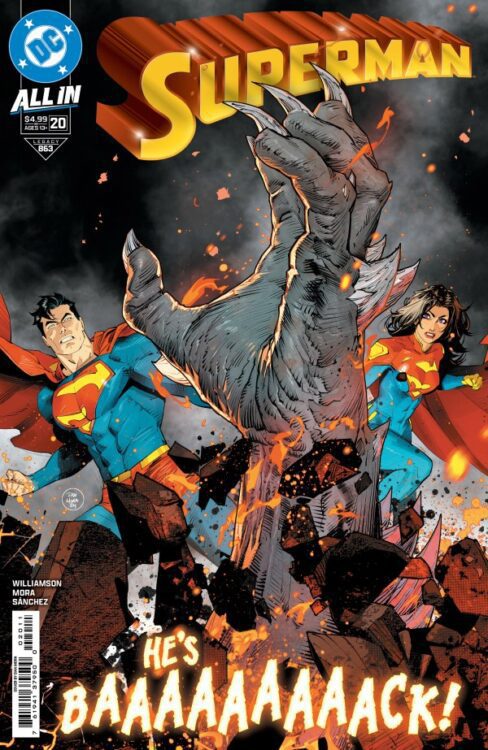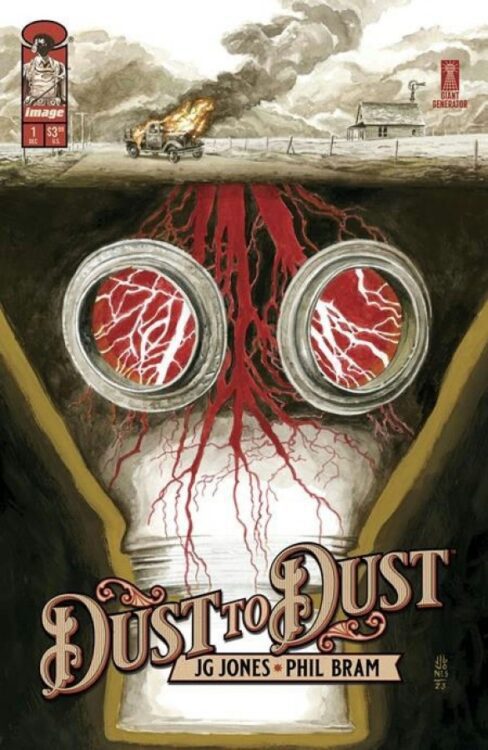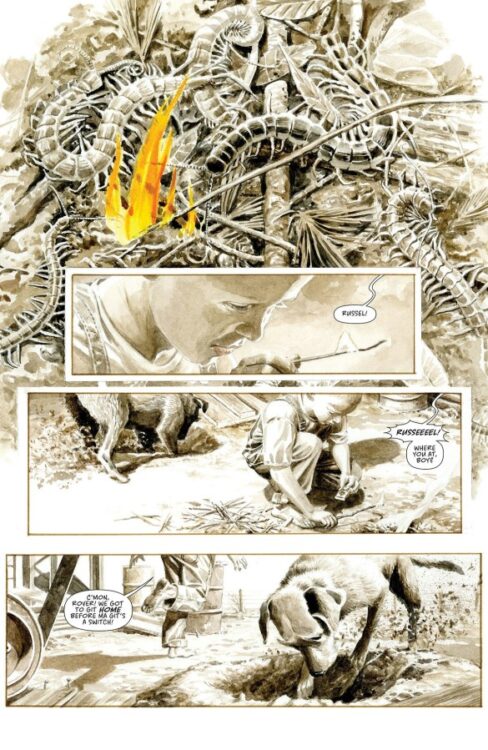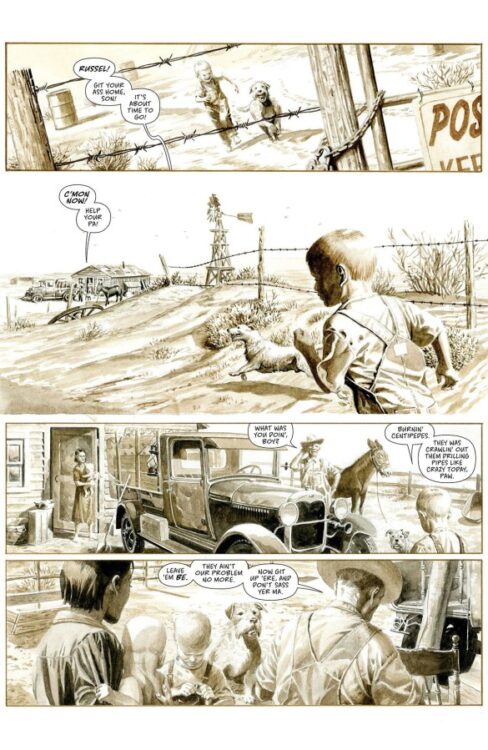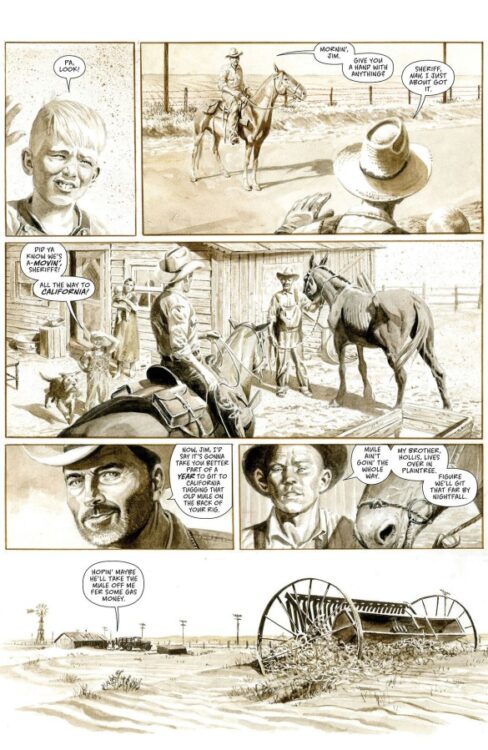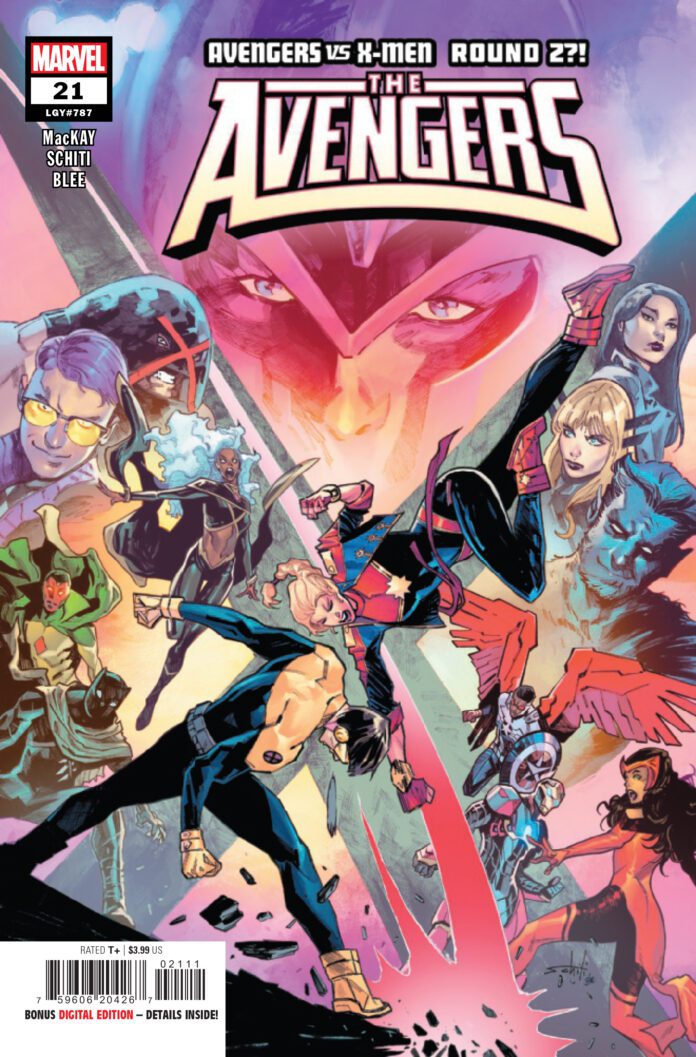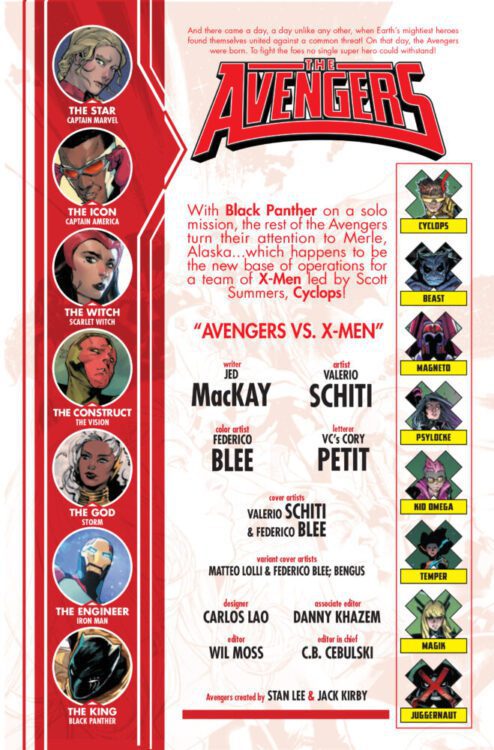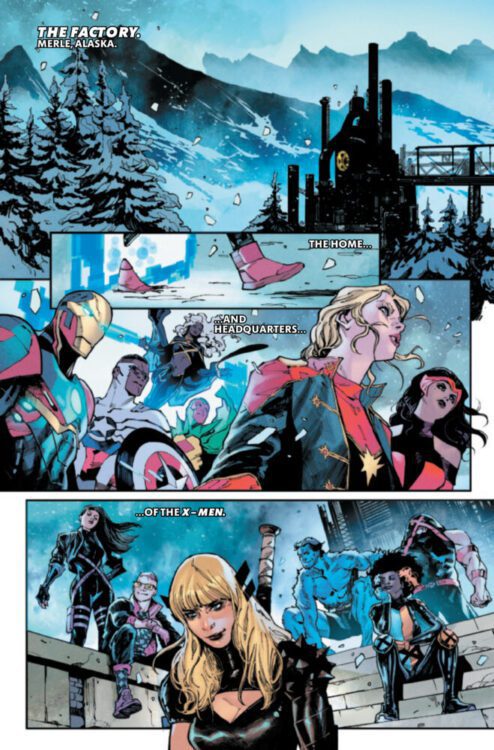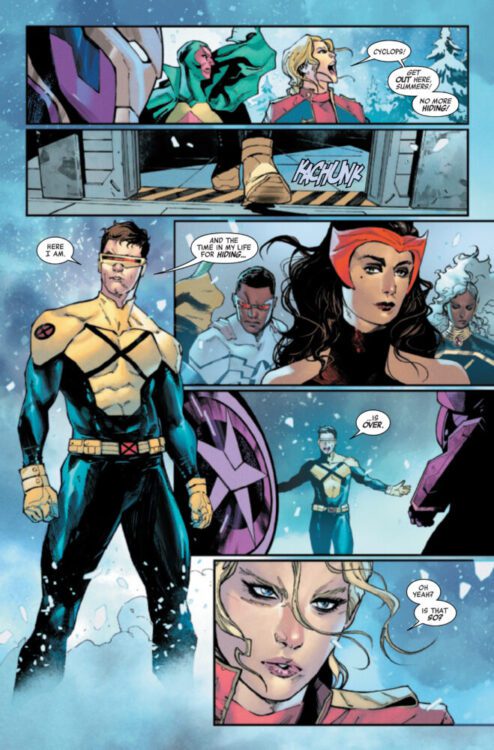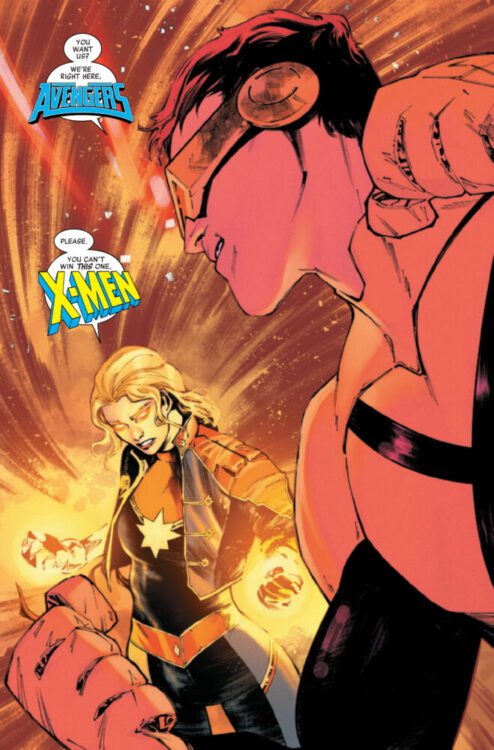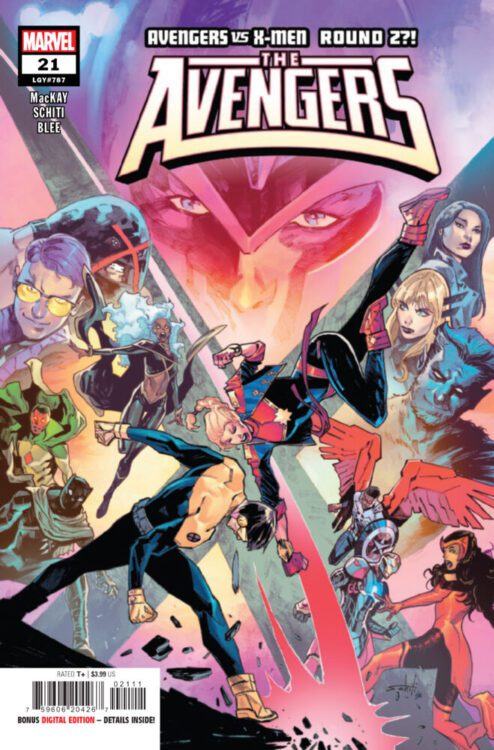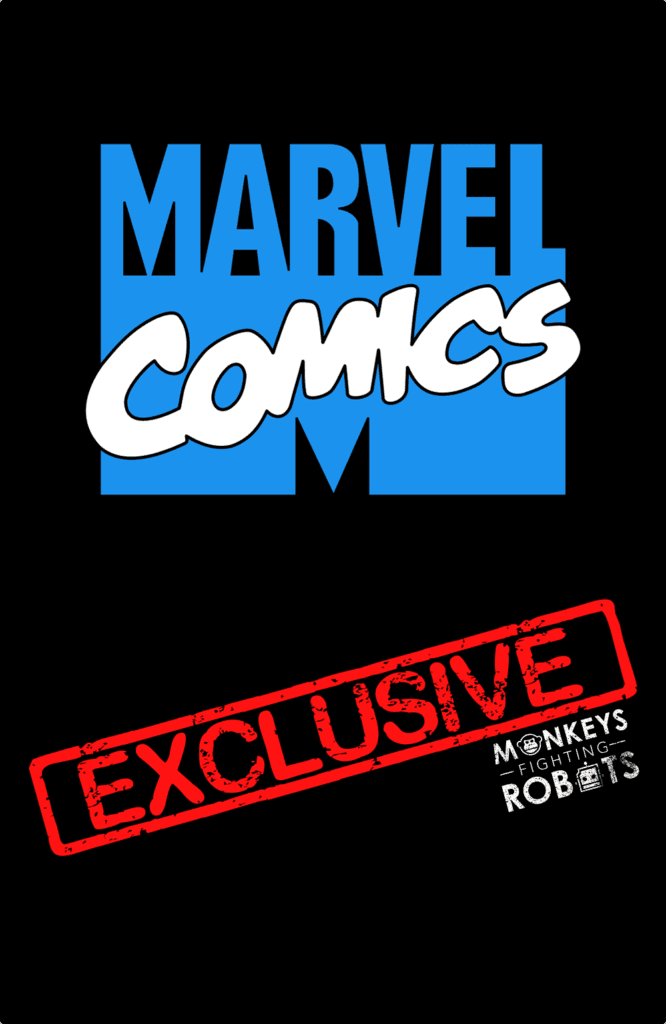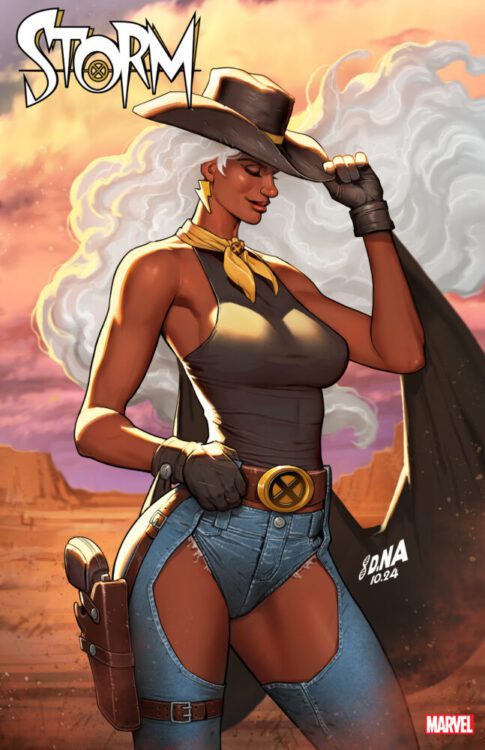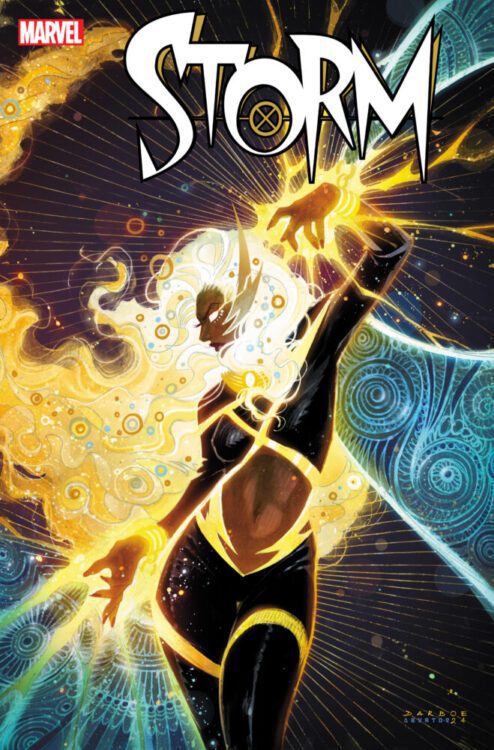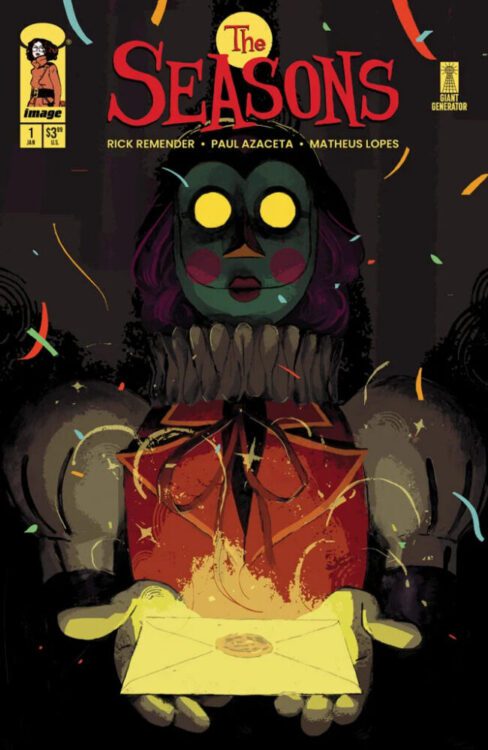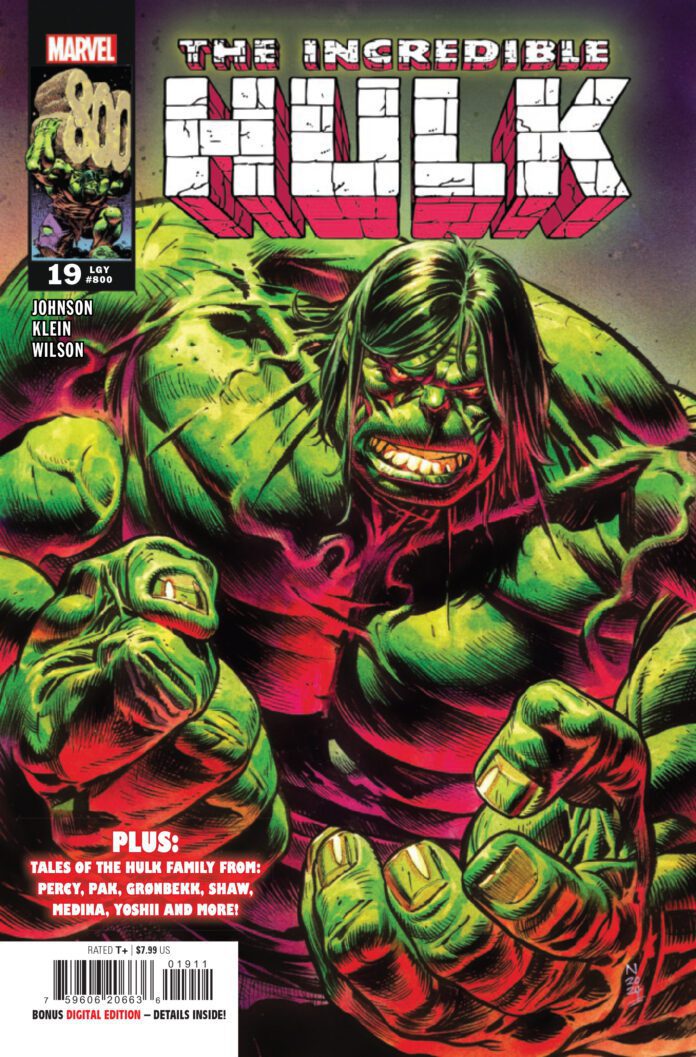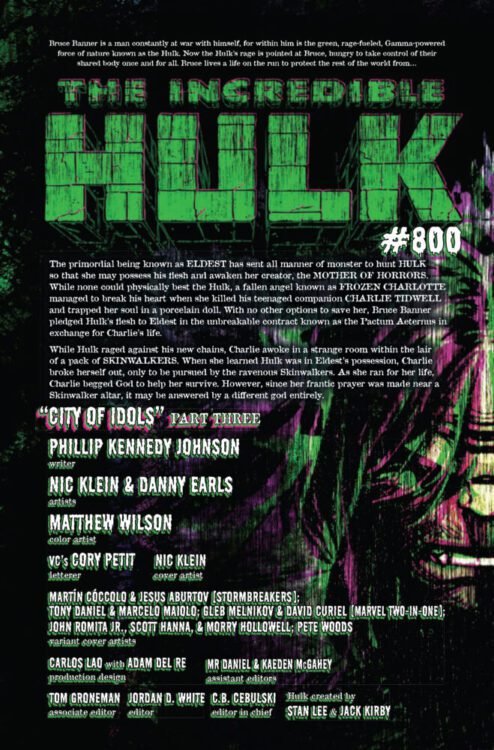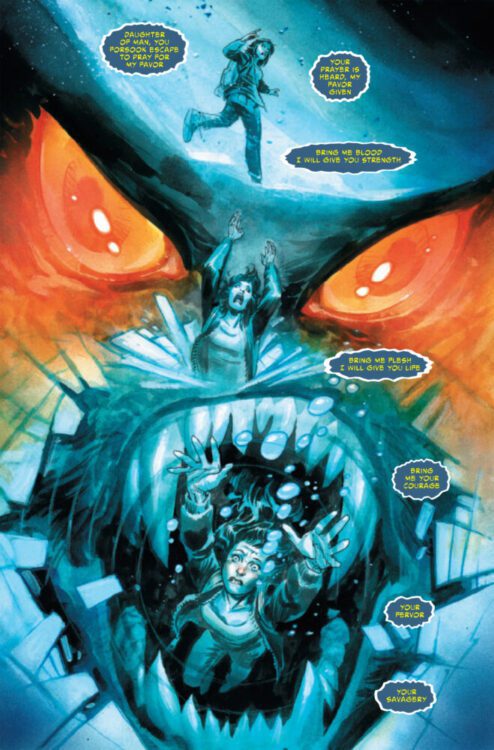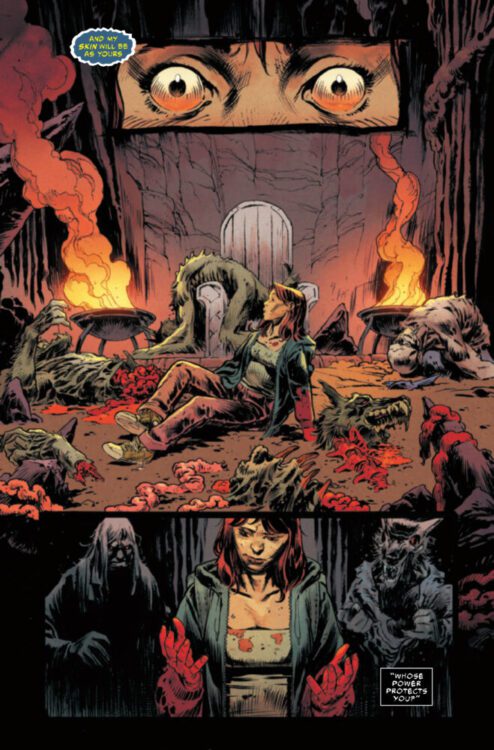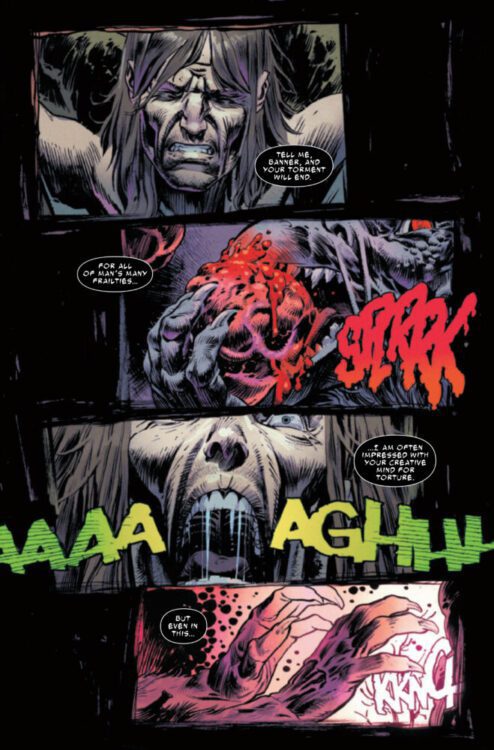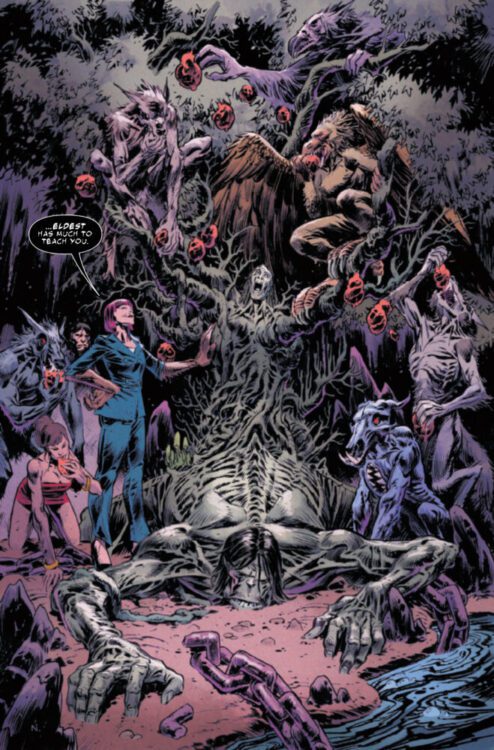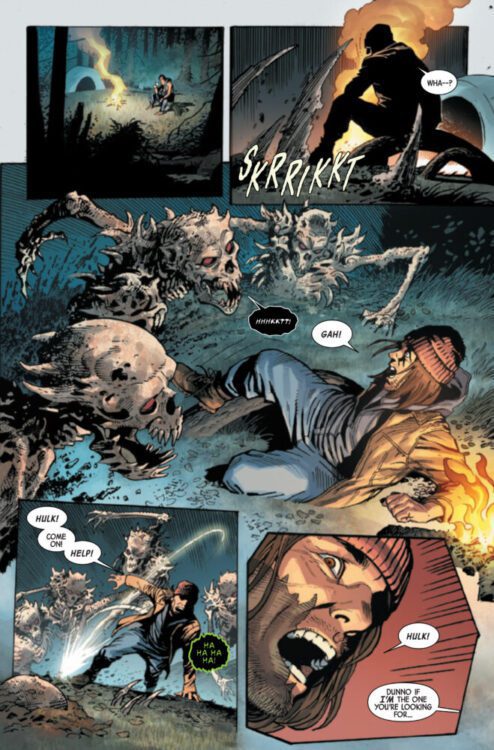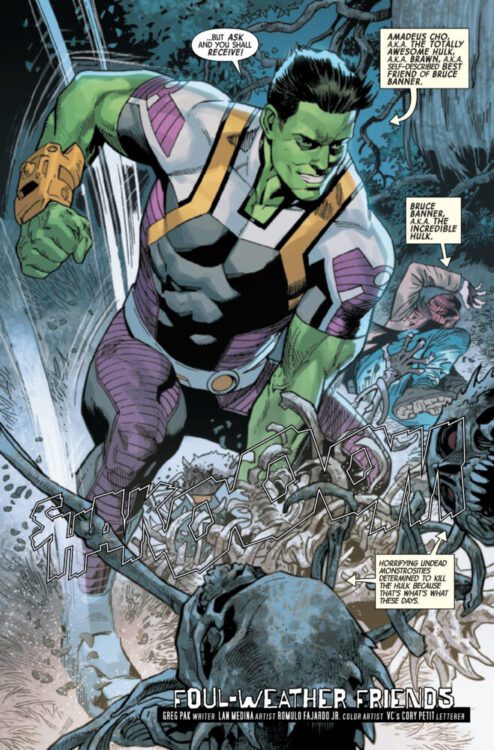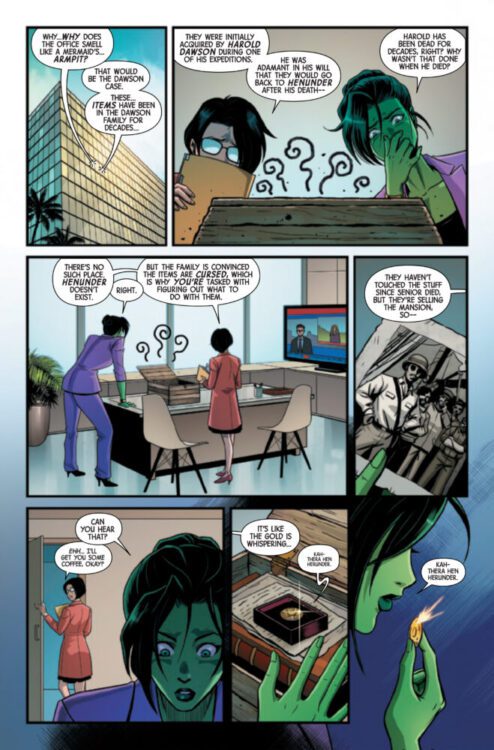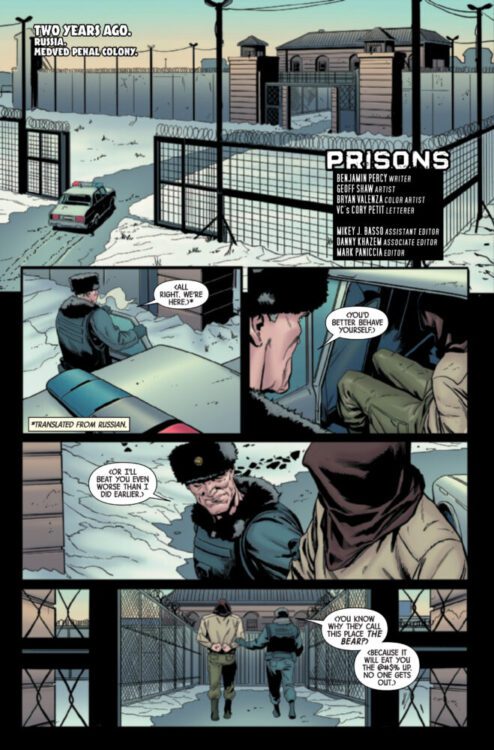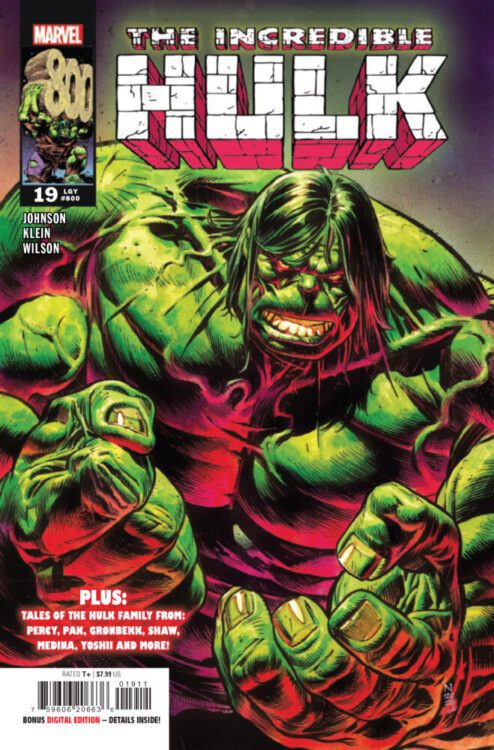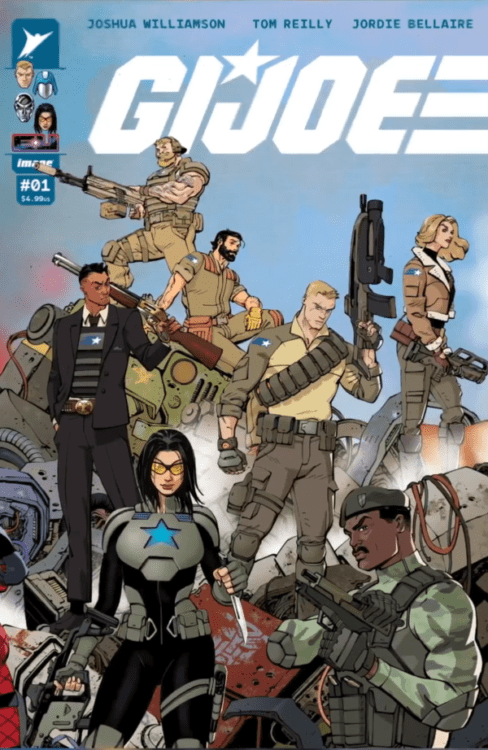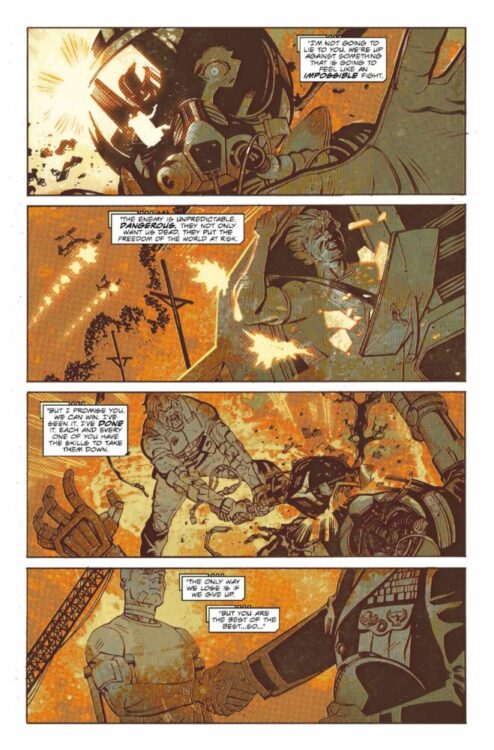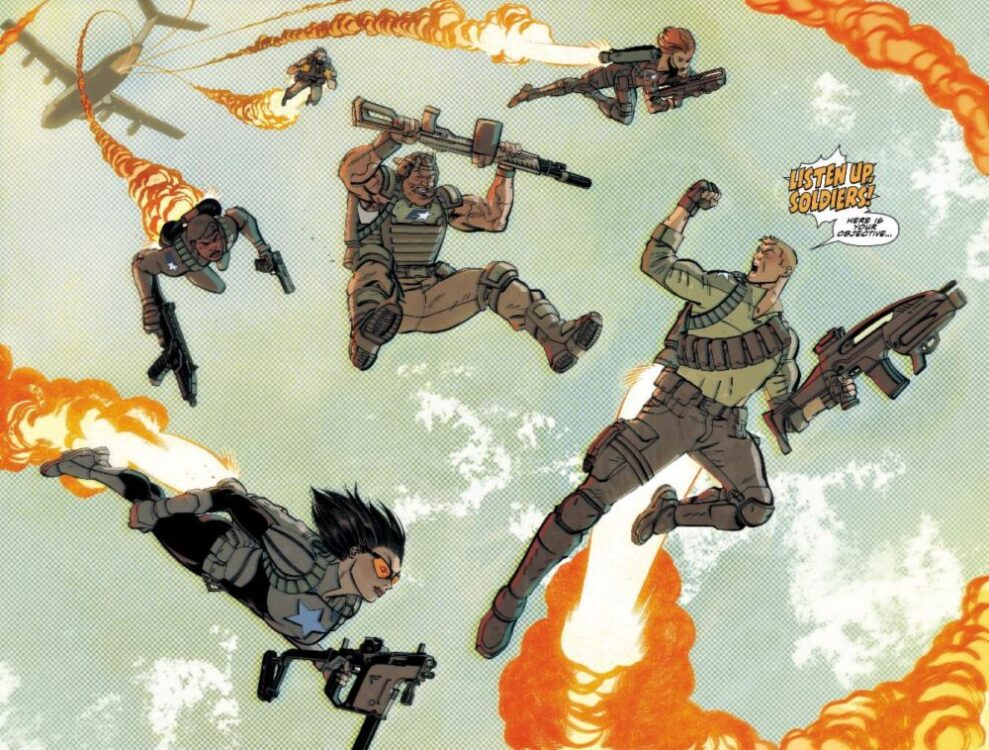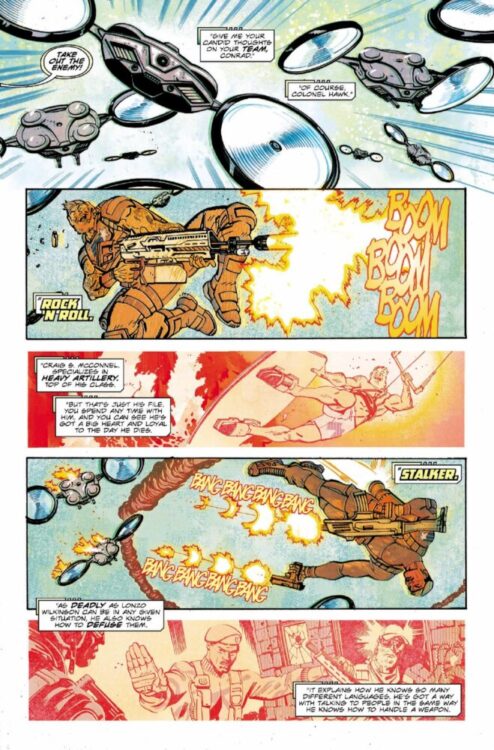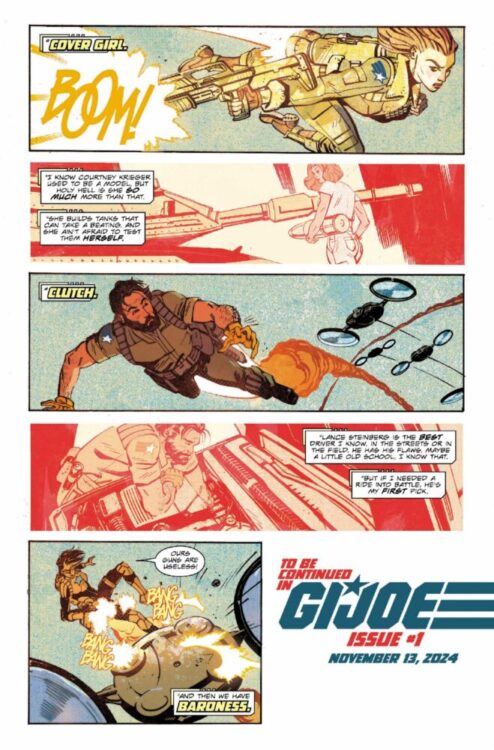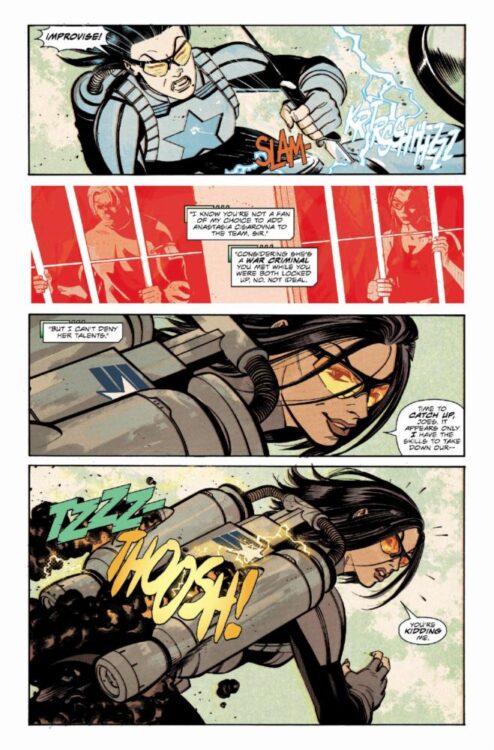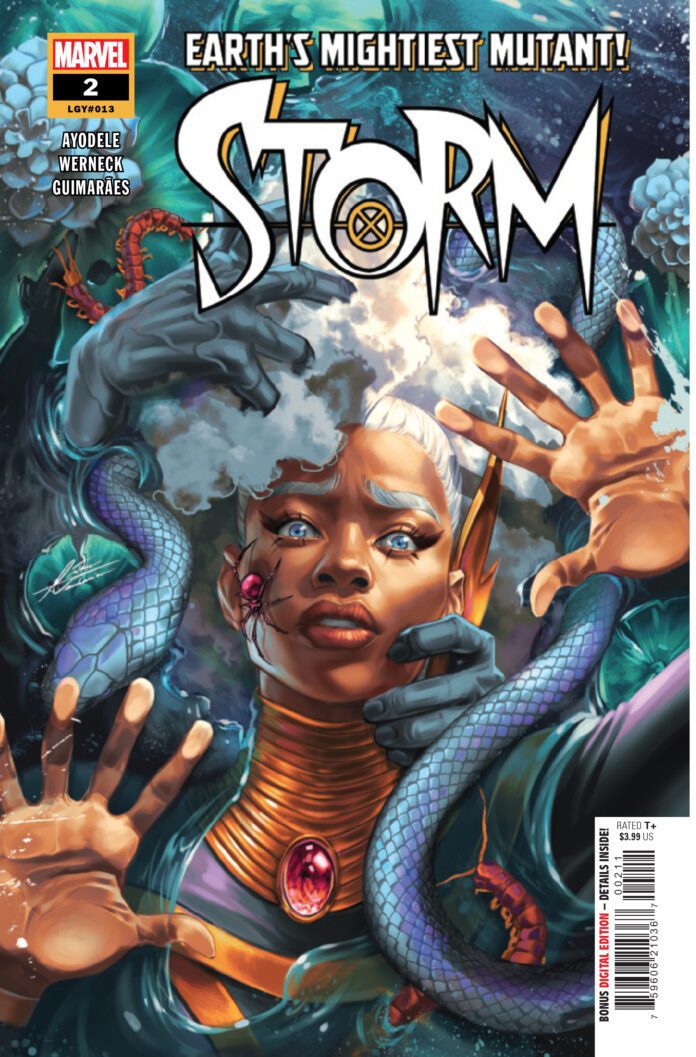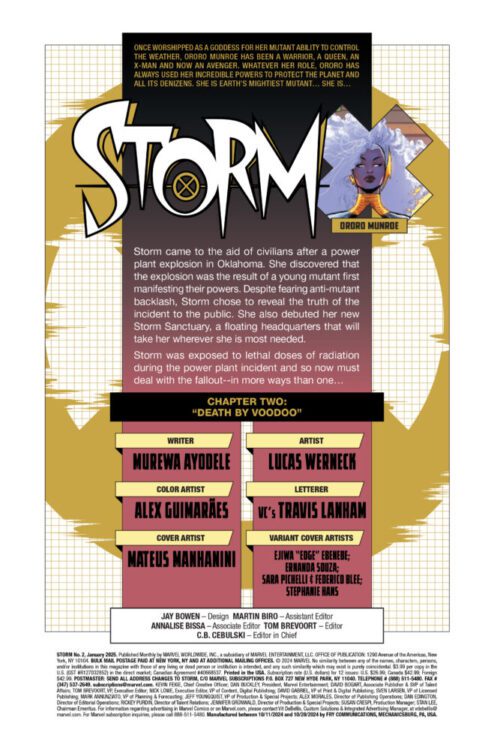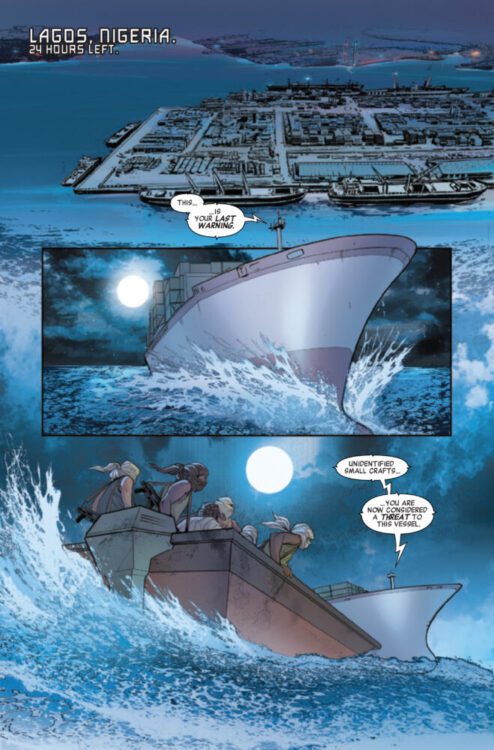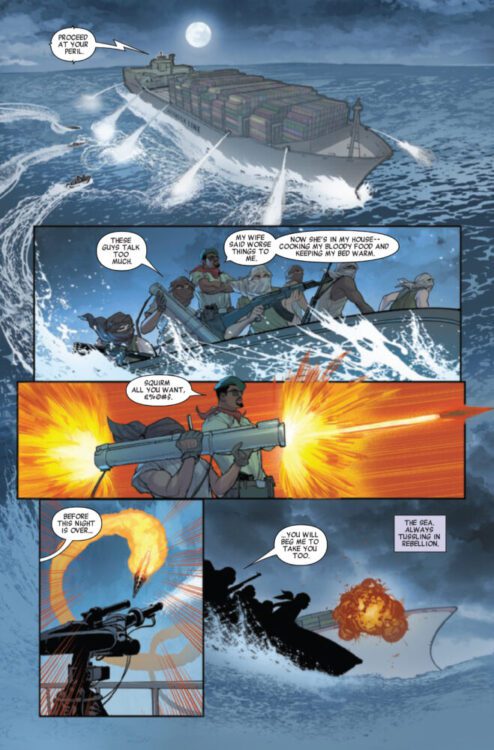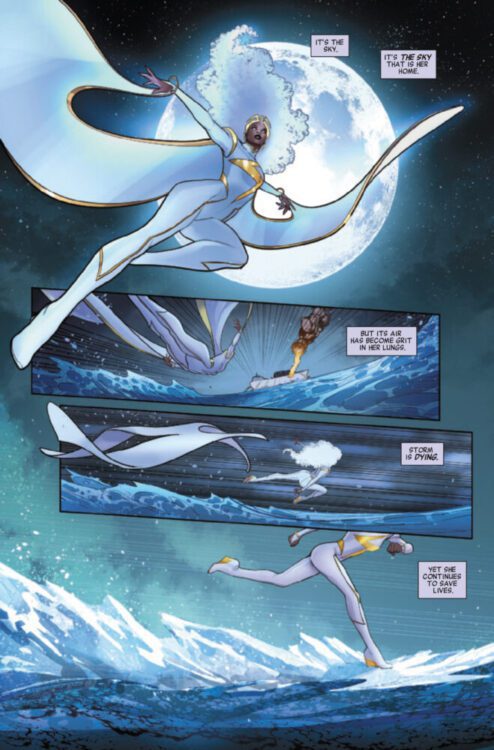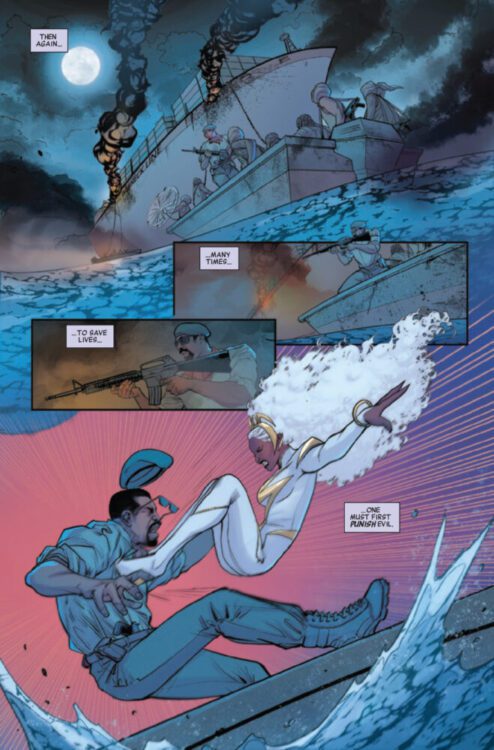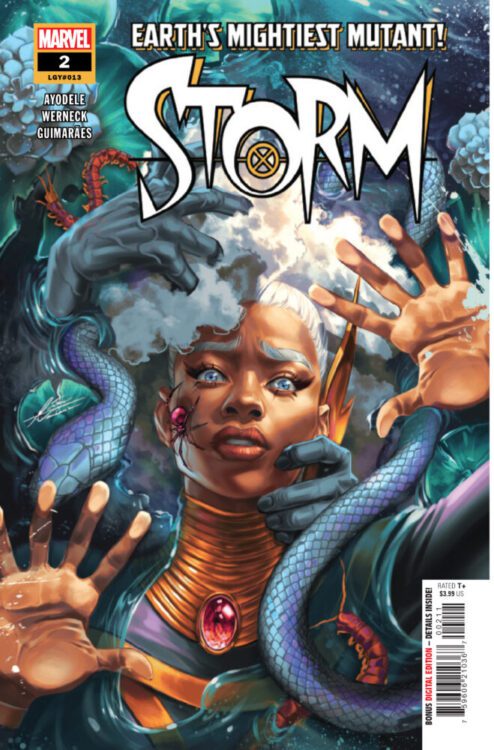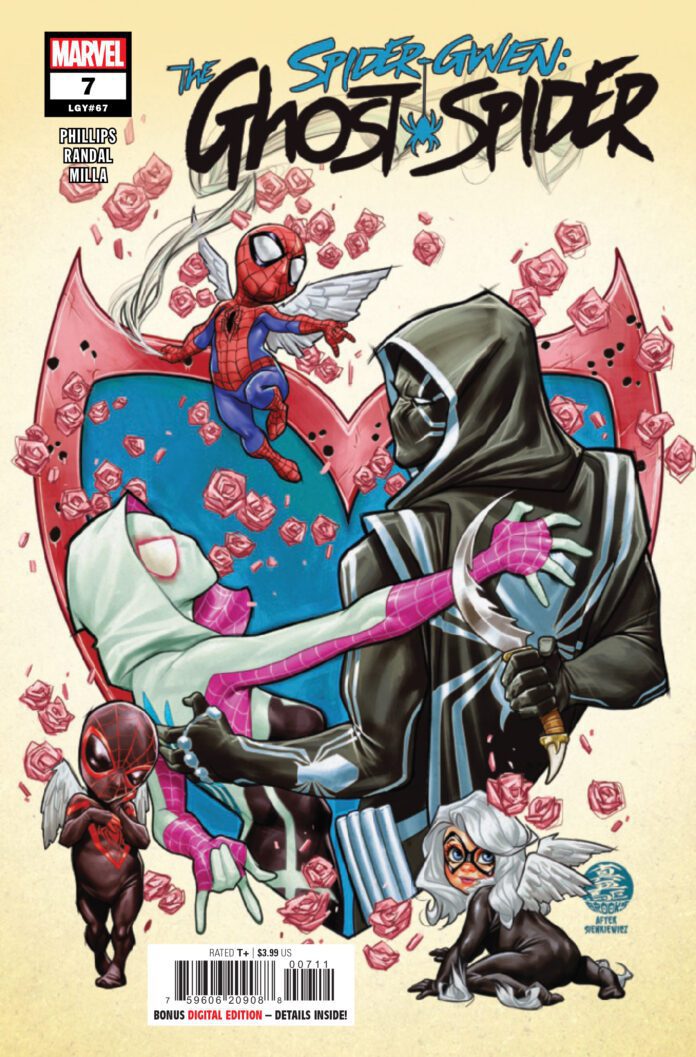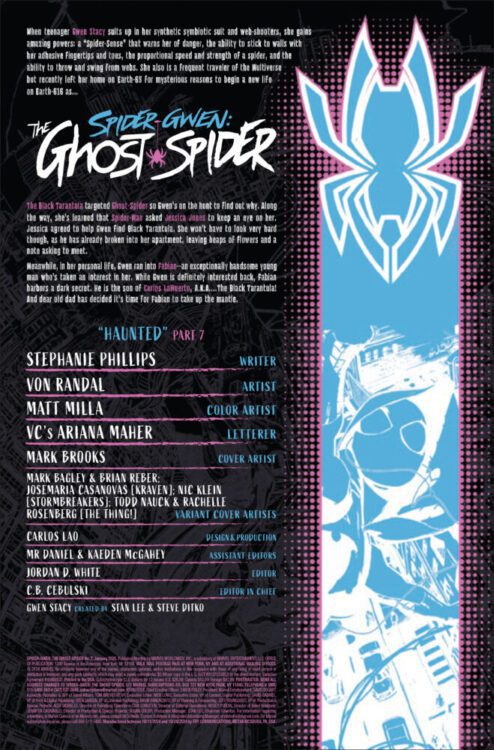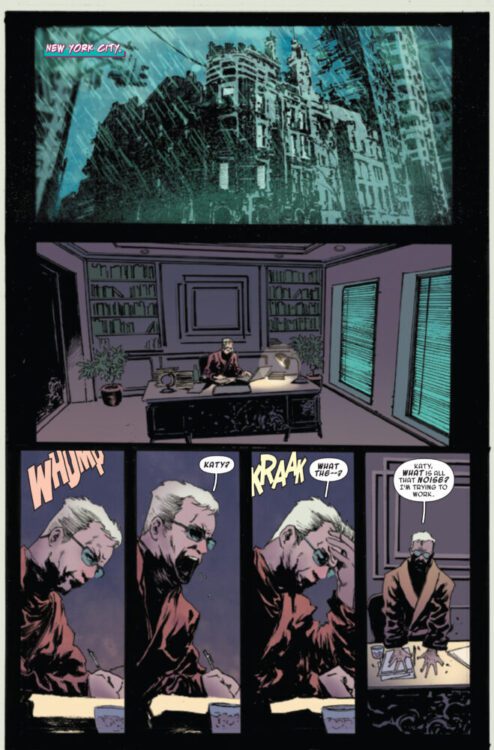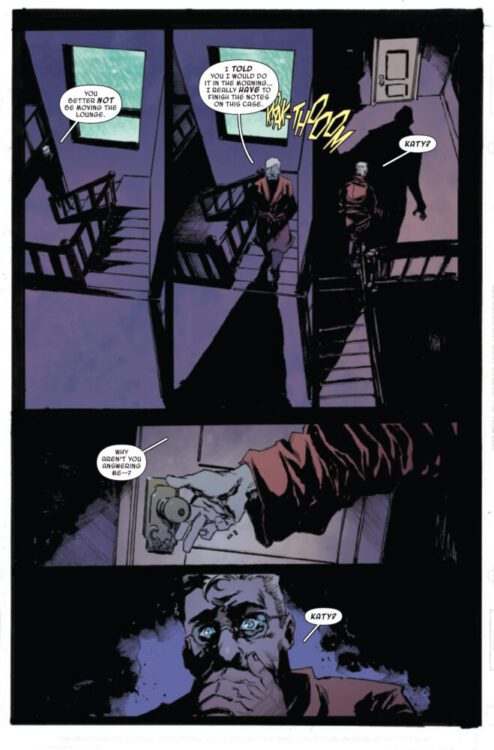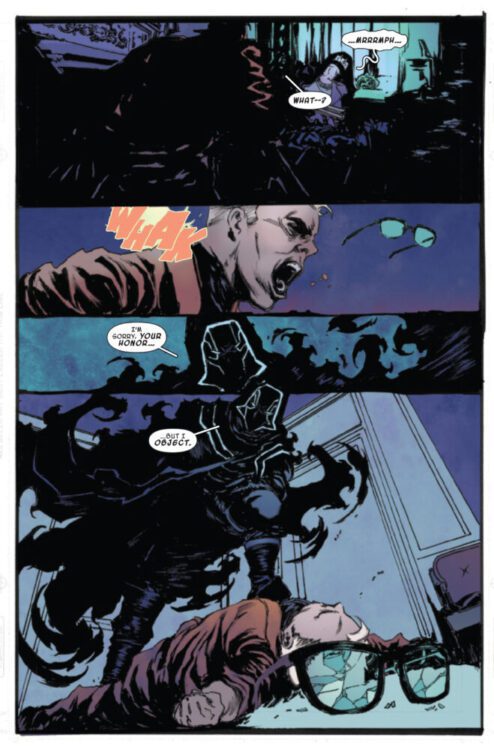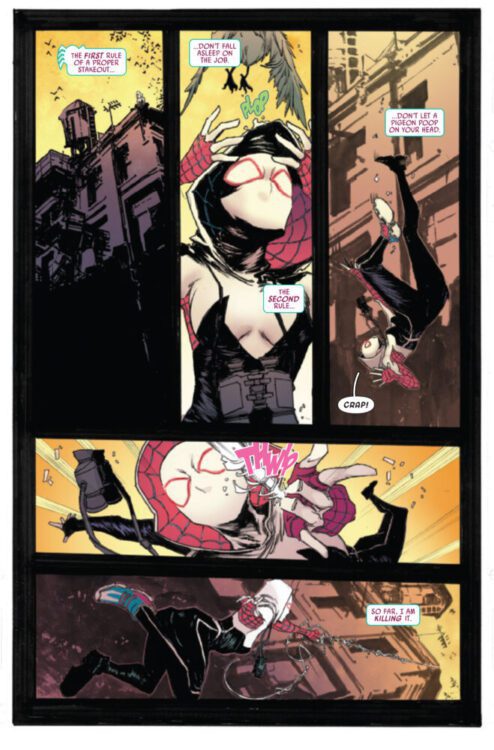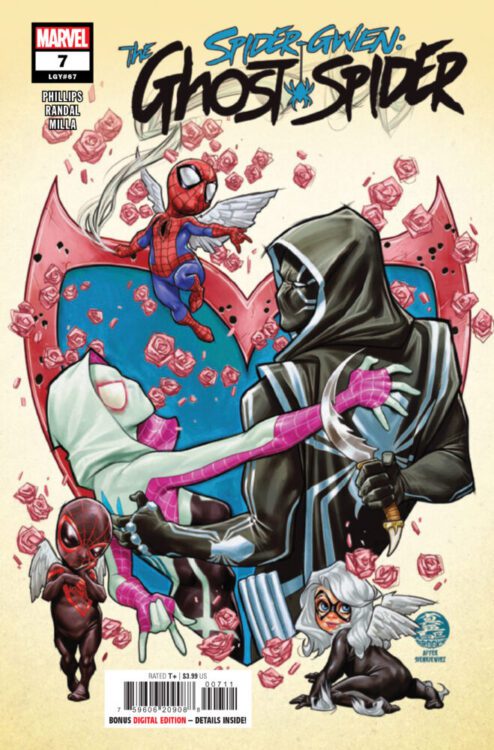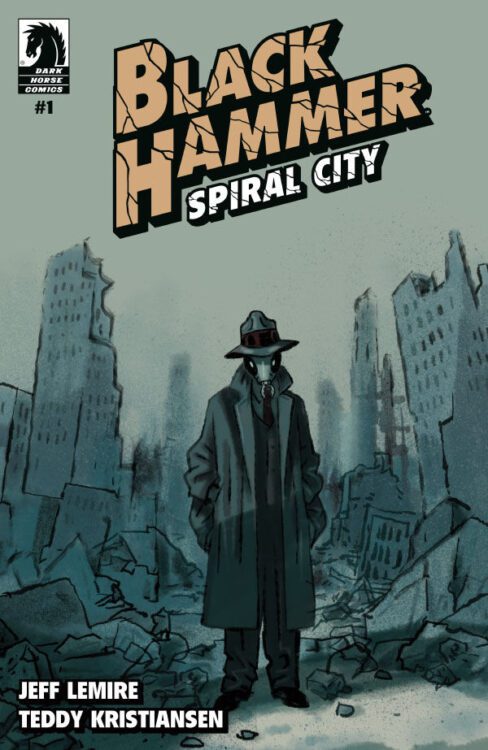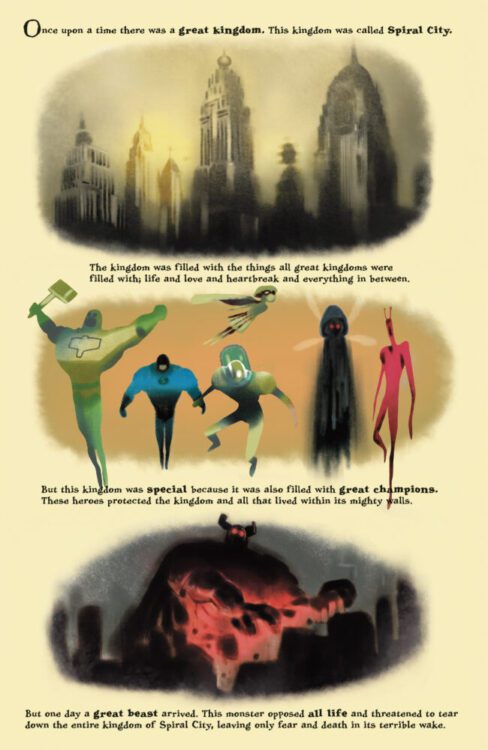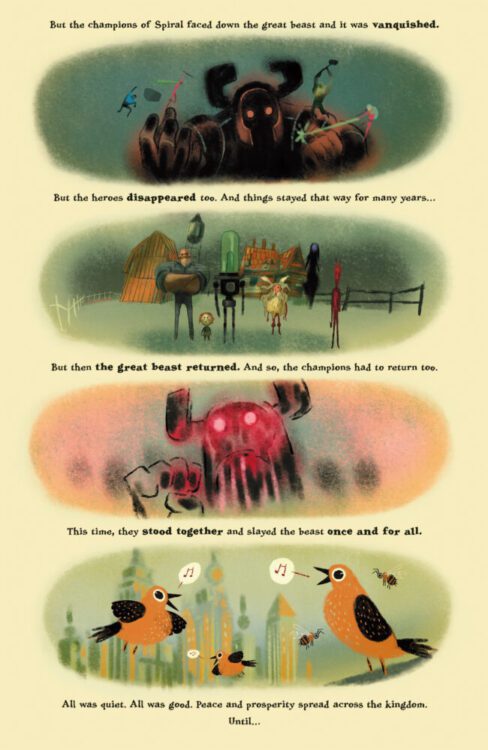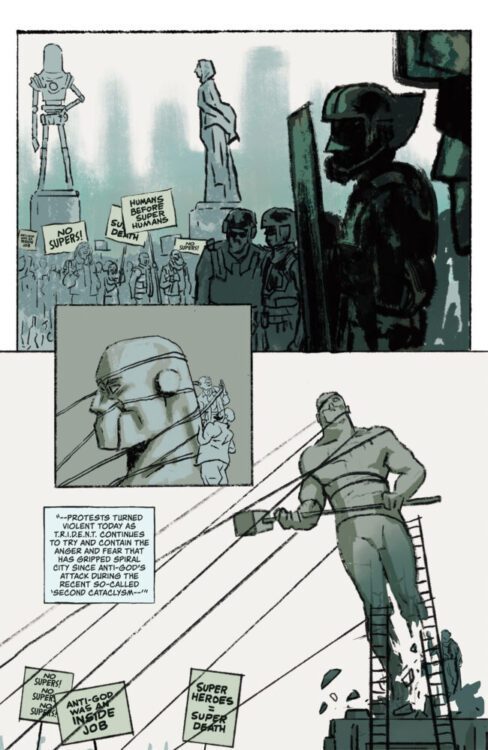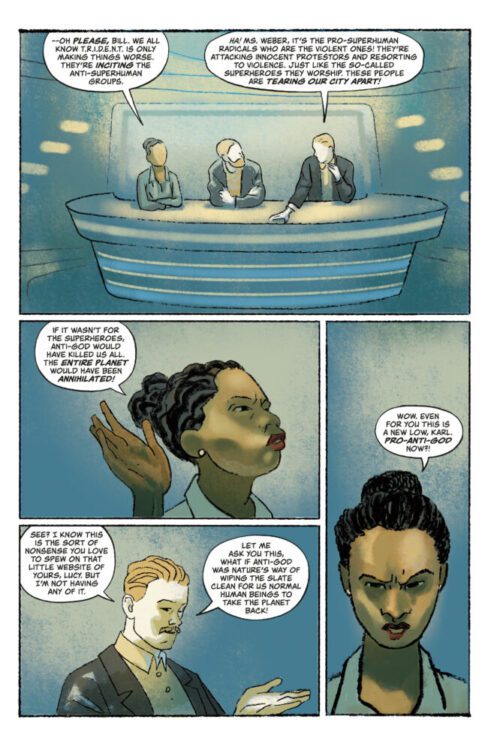The last issue of Superman left readers on the edge of their seats. Superman is frozen in time while Lois Lane is fighting the monster who once killed her husband. The battle against Doomsday continues in Superman #20 from a superstar team of writer Joshua Williamson, artist Dan Mora, colorist Alejandro Sánchez, and letterer Ariana Maher.
The issue starts with the Time Trapper (previously revealed to be a future version of Doomsday) telling Superman that dark days are ahead. What’s truly scary is the implication that Doomsday isn’t the worst of what’s to come. Superman’s fought his fair share of foes out to destroy him over the years, so even he wonders what could possibly be worse than the gray beast. Time is frozen while these two talk. Time Trapper leaves with a warning, and things resume as normal. However, Clark has just remembered that Lois is fighting Doomsday on her own and he swoops in with a devastating blow for the creature. The Justice League and Supercorp were both on standby here, with Parasite even dropping in to (albeit unsuccessfully) help in the fight against this familiar foe.
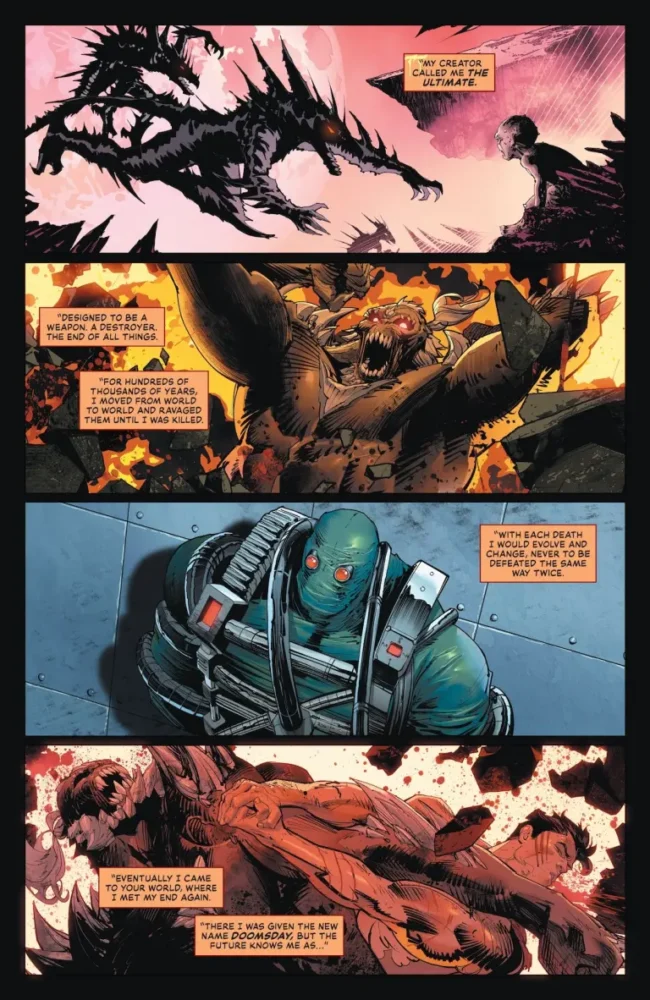
WRITING
If last issue’s focus was primarily exposition, this one works hard to make action a priority. It’s always impressive when a writer still manages to find a way to raise the stakes for Superman in a meaningful way, and Williamson does just that. Part of it is the mystery surrounding Lois’s powers. While the characters know what has happened to her, the readers don’t. We don’t know the limits of her power, and aren’t sure if she’ll be able to pull through against a monster like Doomsday. Williamson uses that to his advantage, even featuring a scene later of Lois wounded. We know she’s strong now, but are worried for her health should these powers continue to take a toll on her.
Doomsday himself is also an incredible character here. In the present, he’s just some brute, but Time Trapper Doomsday is an interesting concept that is explored really creatively. He hints at future events, but also issues a grave warning to Superman. It raises two questions that are sure to be on everyone’s minds: What could possibly be worse than Doomsday, and why is a Doomsday from the future helping Clark? It’s an intriguing dynamic that luckily gets explored further here. The only characters that are unfortunately left out this time around are Lex and Lena. It makes sense since they aren’t this story’s main focus, but it would’ve been nice to have learned more about his amnesia.
Williamson knows how to write a planet-shaking action scene. After Clark is freed from the Time Trapper’s frozen world, the issue cuts to Lois and Doomsday brawling. While we’re worried for her, the issue cuts between her and Superman rushing in to land a punch on Doomsday that causes a shockwave throughout the entire city. There’s weight to the punch, and is also a great way of showcasing Superman not holding back. All bets are off; the Man of Steel is scared and angry.
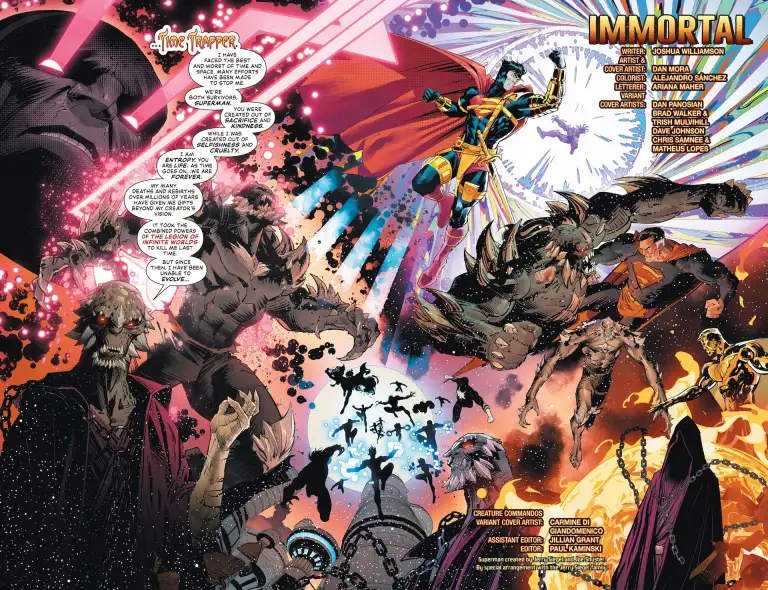
ART
Mora constantly does a fantastic job of proving he understands the gravity of events transpiring. Every major moment is drawn as such and shows that it’s nothing to be skipped over. There’s one part specifically where Lois fights Doomsday, and a Justice League team is on standby with Batman front and center in case she can’t handle it. While it’s a small panel, Mora draws every character in a way that shows they’re powered up and ready to fight. They don’t even need to wait for the okay in order to get in on a round two against Doomsday.
Mora really succeeds on paneling in this issue. Superman starts in fuller pages as he’s more confident, but the space he gets shrinks as the issue goes on. Even when he lands that final blow to Doomsday, it doesn’t take up a whole lot of space. It makes him and Doomsday seem smaller. Like something else is coming, and that this isn’t the best use of his time. It’s a really strong visual way of implying that Doomsday is the least of their concerns, and that there’s more to come.
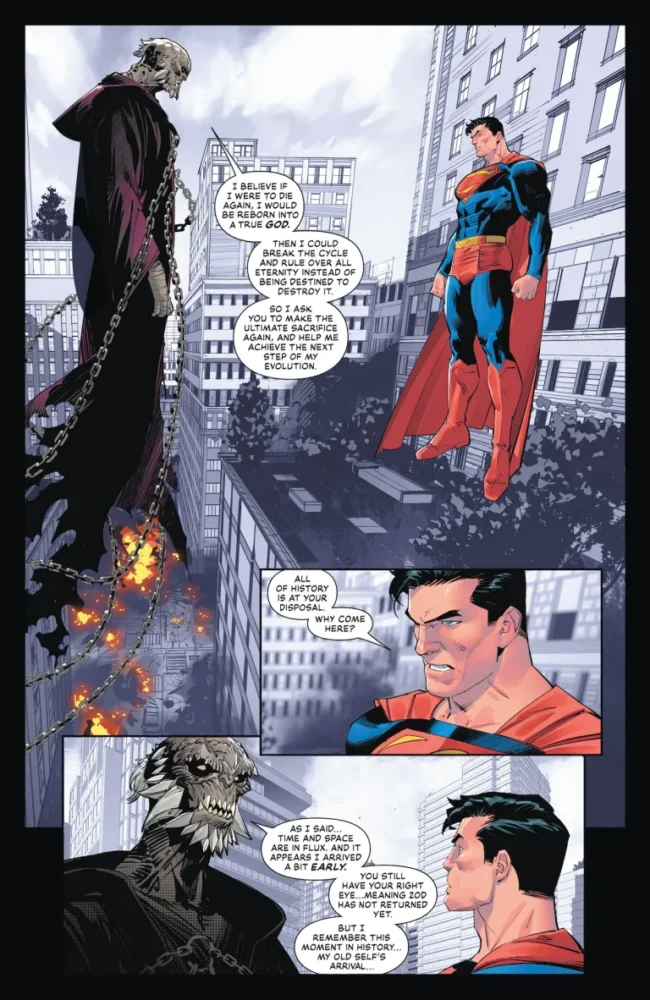
COLORS
A big standout scene in the issue in terms of the coloring has to be the beginning when Doomsday and Superman are speaking with time frozen around them. Sánchez colors Superman so brightly in a dark city devastated by Doomsday. It feels solemn and lifeless. On top of that, he does a great job of muting all the colors in the background of the scene to show that time is stopped, and that everything is frozen except for the two of them. Everything is there, but it doesn’t matter and is almost insignificant compared to the conversation that these two are having. Impressively, through all this, he also lights Superman and Doomsday with the static flames below. It’s a clever use of lighting when there wouldn’t otherwise be anything dynamic to fully capture each character.
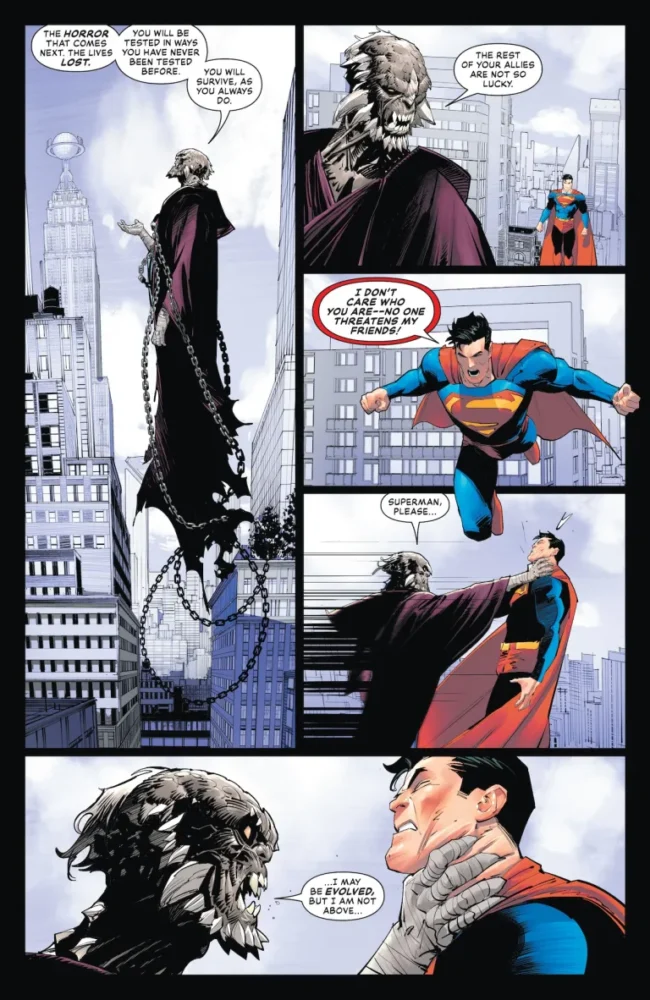
LETTERS
After Superman rushes in to help Lois against the gray monster parading through the city, he’s left in a fit of rage. He sees red as he stands over Doomsday’s defeated body, and something that felt really special this issue was Maher translating that to the Man of Steel’s words as well. Rather than keeping his usual white speech bubbles with emphasized words, she opts to give him a bubbly red bubble, his weird piercing through it. The best part about it is how erratic it feels. Superman hates this creature, and is angry for what it has done to Lois. Because of that, even the bubble containing his words feels unstable and serious. It’s really clever work. Maher juggles a lot in this issue. The text switches from cell phone calls to the TV to the characters speaking to each other, sometimes all at once. She navigates this with grace, and nothing ever gets confusing. We can always properly identify where the sound is coming from with little to no confusion.
CONCLUSION
If the first issue of this arc hooked you, then this one is sure to reel you in. It’s got action and emotion alongside a ticking time bomb in the form of something worse than Doomsday for Superman and Superwoman to face. This team made something that dives deep into Superman’s psyche while also exploring an alternate future version of a character many Superman fans have come to fear over time. While we aren’t sure what exactly it is yet, we’re all certainly excited to discover what Superman and friends have to fight that somehow blows Doomsday out of the water.


